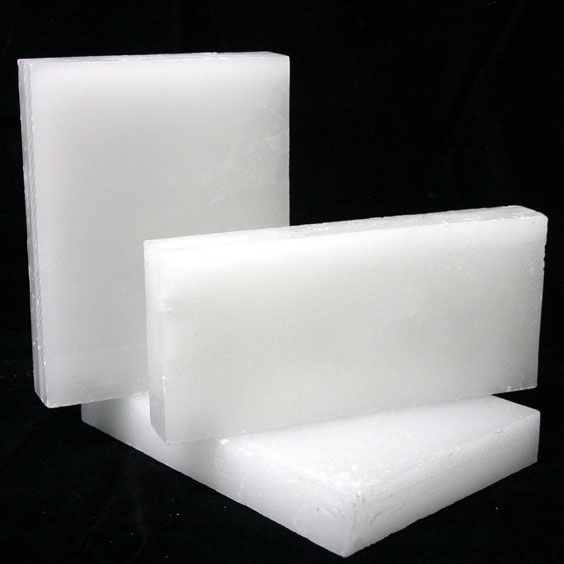
Waxes
Paraffin wax is a white or colorless soft solid derivable from petroleum, coal or oil shale, that consists of a mixture of hydrocarbon molecules containing between twenty and forty carbon atoms. It is solid at room temperature and begins to melt above approximately 37 °C; its boiling point is 370 °C. Common applications for paraffin wax include lubrication, electrical insulation, and candles. In industrial applications, it is often useful to modify the crystal properties of the paraffin wax, typically by adding branching to the existing carbon backbone chain. The modification is usually done with additives, such as EVA copolymers, microcrystalline wax, or forms of polyethylene.
Slack waxes have an oil content of from 5 to 30%, depending on the product. They are a welcome by-product of the production of lubricating oils. They can be productively employed in many industrial processes as they are; or they can be mixed, blended, or further refined. The melting points of slack wax varies from 41°F to 66°F. Some examples of applications for slack waxes: in wax emulsions, as binders and water-proofing in artificial woods; in matches; in jar candles; in rust-protection products; in industrial lubricants; in arena-footing; in soil or turf protection; and in fireplace products.
Paraffin Wax
| Properties | Unit | Light Grade | Light Heavy Grade | Heavy Grade |
| Oil Content | %Wt. | 2 max | 3 max | 5 max |
| Congealing Point | °C | 56-58 | 59-64 | 63-71 |
| Viscosity @ 100°C | cSt | 3.87-4.36 | 4.6-6.5 | 6.5-8.1 |
| Refractive Index | RI | 1.43 5 0 | 1.43 8 0 | 1.443 0 |
Download PDF
Slack Wax
| Properties | Unit | Specification | Test Method |
| Kinematic Viscosity @100°C | cSt | 7-9 | ASTM D 445 |
| Congealing Point | °C | 65-68 | ASTM D 938 |
| Density @15°C | kg/m³ | 830-850 | ASTM D 1298 |
| Oil Content | RI | 30 max | ASTM D 721 |
| Refractive Index @70°C | 1.4520 | ASTM D 2159 | |
| Color | Brownish |





